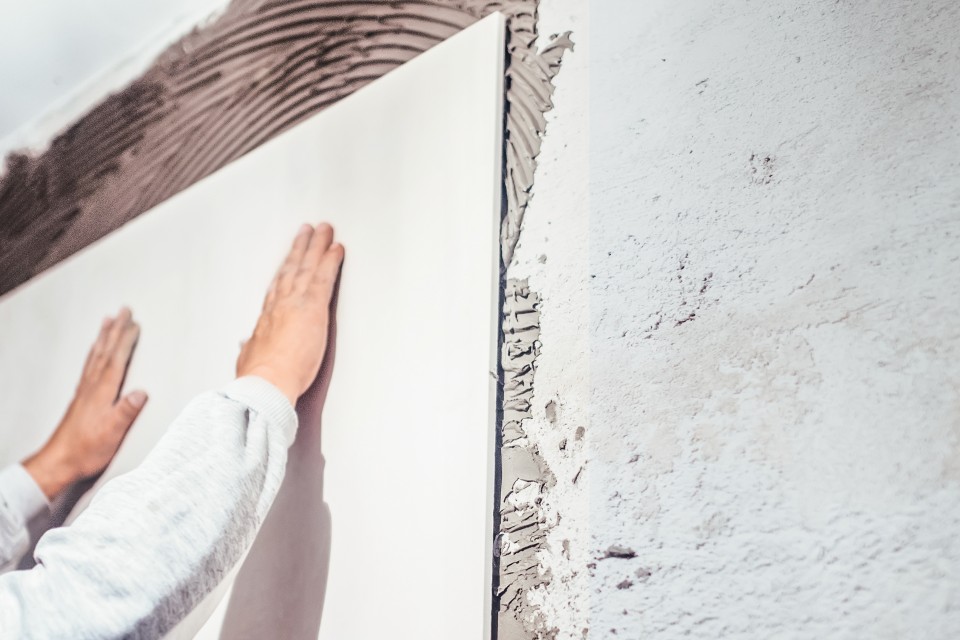
Affixing large-format tiles properly requires not just good tiling skills, but also the right adhesive.
Mar 01, 2019 Read time: approx. MinutesMinute
Adhesive strength meets flexibility
Large-format tiles are currently popular in bathrooms. Affixing them properly to walls or floors requires not just good tiling skills, but also the right adhesive. The polymeric binders supplied by WACKER enable adhesive manufacturers and users to meet this challenge.
Bathrooms nowadays are much more than purely functional wet rooms. According to “Schöner Wohnen,” a German home decoration magazine, “feel-good bathrooms” and “personal spas” are right on trend. Especially for those who have the funds and feel drawn to a classy modern look. “The bathroom is second only to the kitchen in terms of greatest financial outlay,” says Dr. Tobias Halbach, director of Technology Management for Construction Polymers at WACKER. “We spend an average of 45 minutes every day in the bathroom, so it should be a well-appointed, welcoming space. Functionality, design and wellness aspects are becoming more important all the time.”
Whether new build or renovation, whether modern, traditional or Mediterranean style – the world is your oyster when it comes to a fit-out. The style is particularly affected by the choice of wall and floor coverings. “All around the world, it is the major manufacturers who determine what is the latest fashion in tiles,” says Halbach. “They set global trends – regional tastes are actually rare.” The WACKER expert also knows the most popular type of tile among consumers in the developed industrial nations: large-format tiles, measuring at least 60 x 60 centimeters. “These look particularly classy, make rooms seem larger and are also more pleasant to walk on because there are fewer joints between them.
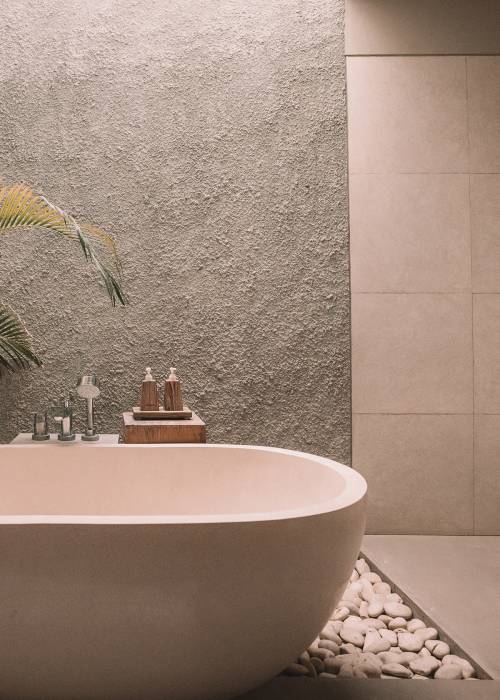
Not only that, but large-format tiles are also easier to clean because of those fewer joints. People are falling in love with large-format tiles not only in Europe, but virtually everywhere else. It wasn’t always like that. Bathrooms in the 1970s featured dark tiles with floral motifs. These gave way in the 1990s to bright tiles with colorful borders. Then, over the past 15 years, larger and larger porcelain tiles gradually gained in popularity. For several years now, unusual motifs, such as a wood or concrete look, have been conquering the market. High-resolution digital printers are capable of printing a huge range of decorative motifs and textures straight onto the porcelain.
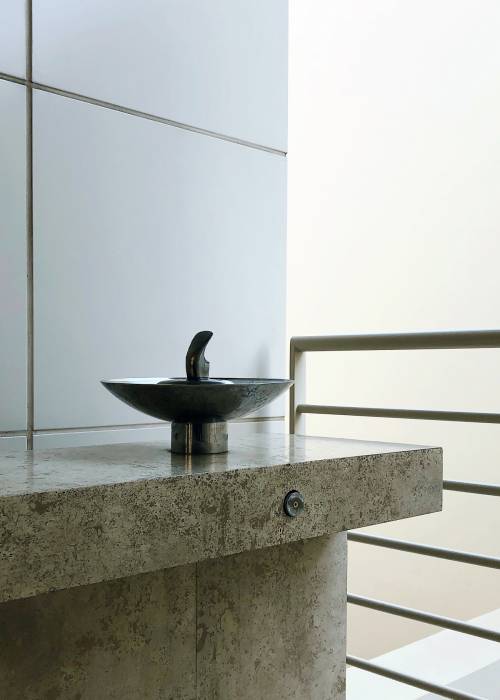
A challenging trend
The shape, size and constituent material of the tiles dictate the tiling method, the conditions which the substrate must meet and the choice of adhesive to use.
“Large formats are generally harder to handle,” says Armin Hoffmann, a senior technical manager at WACKER. “They are heavier and once they reach a certain weight need two people to carry them. That makes tiling a much more complicated process.” For a start, the walls or floor need assiduous preparation and must be level. “Any irregularity whatsoever in the substrate can put a tile under stress further down the line. And the larger the tile, the greater the risk that it will break,” explains Hoffmann. Large-format tiles are correspondingly more expensive to repair than smaller ones.
Expert handling is therefore just as essential as the right choice of tile adhesive. Binders play a key role in an adhesive, because they boost the bond between the tile and the substrate while also increasing the adhesive’s flexibility. The latter is especially important for very thin tiles just three millimeters thick. These may weigh less in large format, but they are also difficult to handle. “Thin tiles simply break more easily and need to be transported very carefully,” explains Halbach.
“It is the major manufacturers that set tile trends around the world.”
Dr. Tobias Halbach, Director of Technology Management

Room for a creative vibe and a feel-good factor: large-format tiles not only look elegant, but also give the appearance of space.
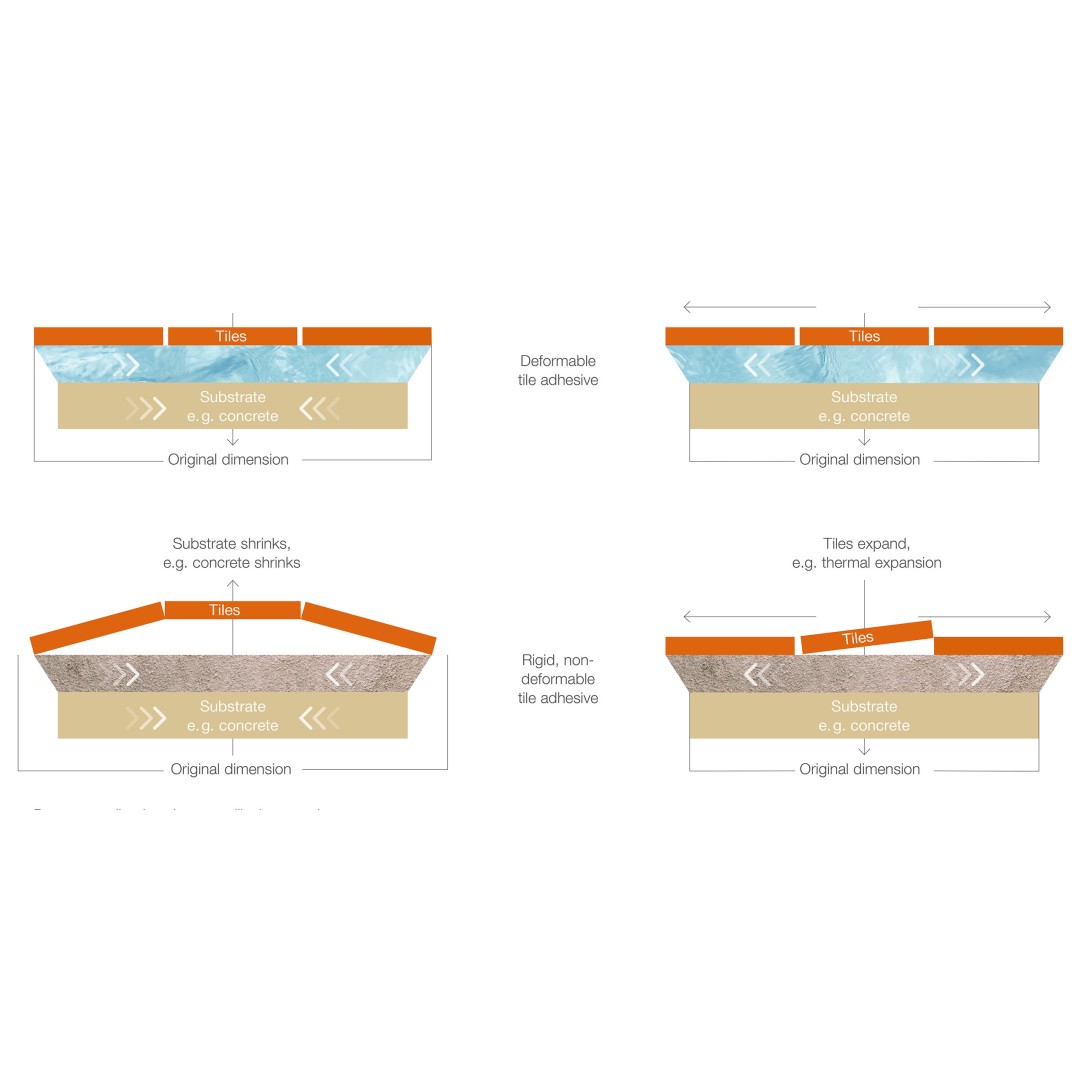
Flexible support to prevent cracks and spalling – deformation behavior and shear force between tiles and substrate as regards flexible and rigid tile adhesives
But even when they are firmly attached to a wall or floor, thin, modern large-format tiles can still break. One possible reason is that the substrate and tile expand to different extents upon exposure to heat.
When a bathroom is aired for a long time in winter, the tile surface might drop to a temperature of around 0 °C, compared with the 45 °C that shower water can reach. Such are the temperature differences that the system comprising tile–adhesive–wall has to withstand. Consequently, the sandwich layer – the tile adhesive – must not only create a strong bond but also be flexible as that compensates for any stresses. If the adhesive layer were rigid, the tile would crack or fall off. The fact that both thick and thin large-format tiles are susceptible to breaking is also due to the lower number of joints, which are also capable of accommodating stress. Small tiles have a much greater percentage area of joints than their larger counterparts and so cracks are prevented.
No matter whether they are thick or thin, large tiles weigh more and so are more difficult to attach to walls. Here, again, the tiles have to meet particularly high requirements: “You need very good non-slump properties when you are laying large-format tiles. For they allow you to set the tiles exactly where you want them in the adhesive bed,” says Hoffmann. “We can now offer adhesive makers a new binder that features this property and also imparts the necessary degree of flexibility and bond strength. It rounds out our portfolio perfectly.”
Highly water-resistant
VINNAPAS® 8812 T is a dispersible polymer powder based on a terpolymer of vinyl acetate, vinyl chloride and ethylene that provides adhesives with high water resistance, high non-slump properties and very good workability. As a result, the tiles stick to the wall when the adhesive is still damp, and they can be readily adjusted. Many tile adhesives and troweling compounds require additives in order to achieve strong adhesion or high non-slump properties. These additives are not needed with VINNAPAS® 8812 T.
As manufacture involves neither plasticizer nor solvent nor film-forming additive, the dispersible polymer powder is also suitable for formulating low-emission tile adhesives for the thin-bed technique. This requires less tile adhesive – and fewer raw materials – and the tilers can work more economically while conserving resources. Wall and floor tiles can be laid up to four times faster by the thin-bed technique than by the thick-bed approach. At an application rate of around 3% dispersible polymer powder, it is also possible to cut down on as much as 90% of the raw materials sand and cement.
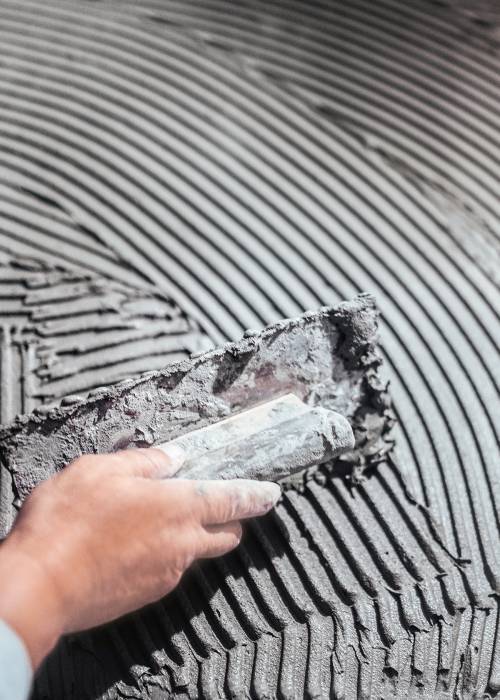
Before large-format tiles are installed, the walls or floor need very careful preparation and must be level.
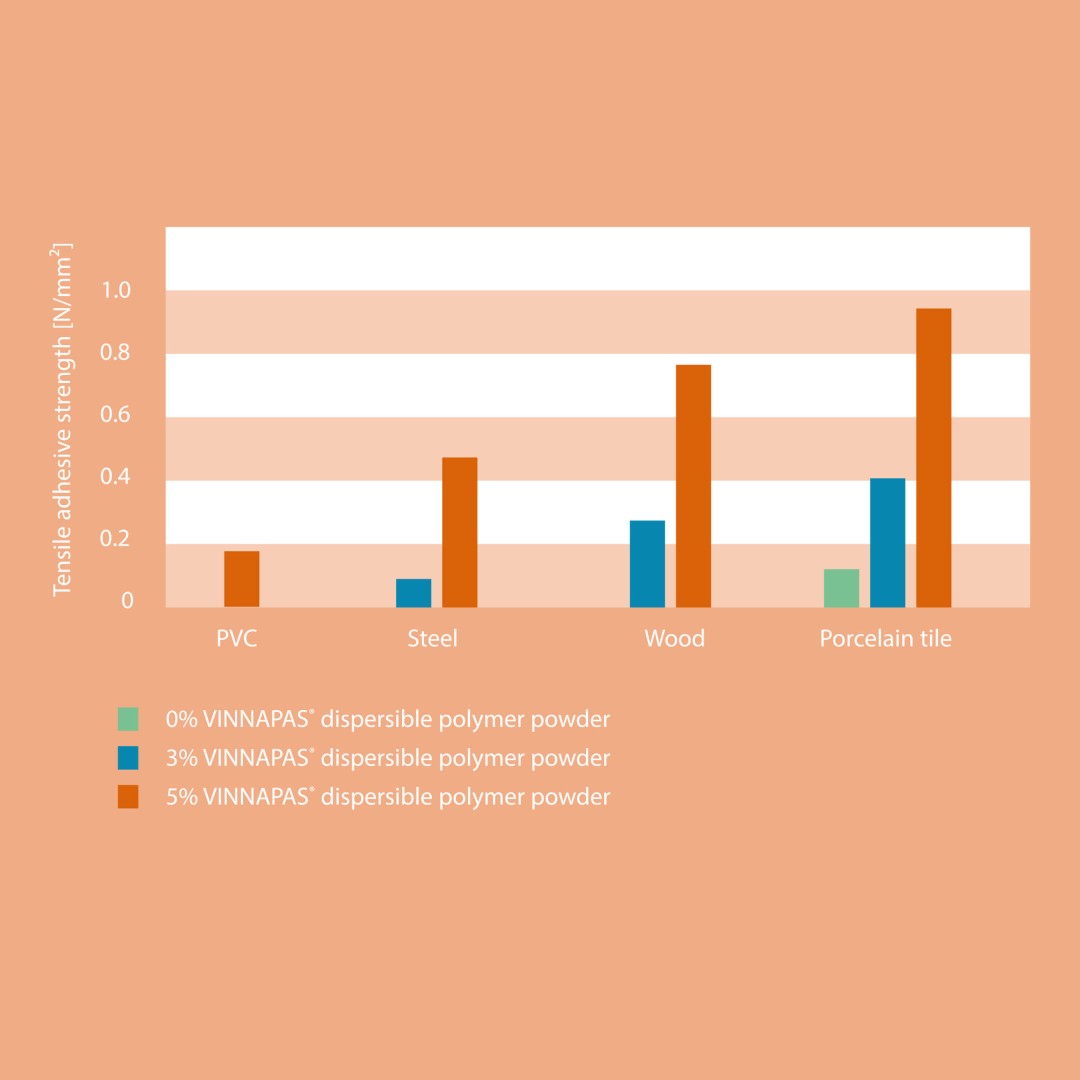
Adhesion on challenging substrates Schematic depiction of the tensile adhesive strength of tile adhesives – modified to varying degrees – on challenging substrates. Tensile adhesive strength rises with increasing polymer content. (Test as per EN 12004-2)
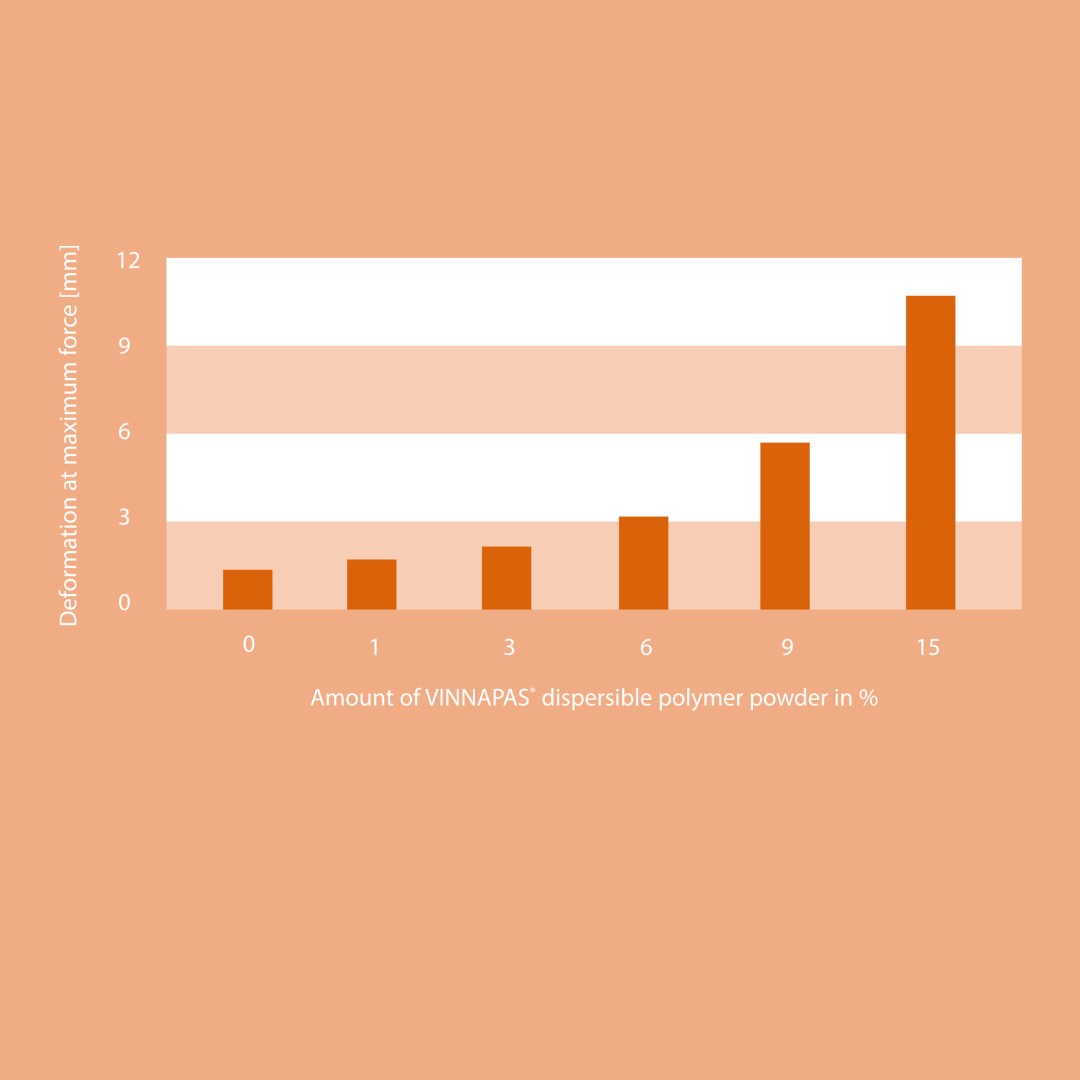
Effect of VINNAPAS® dispersible polymer powder on deformability (flexibility) Deformability of mineral tile adhesive (35% Portland cement). Test performed in line with EN 12004-2 deformation test. Storage conditions: 7 days’ standard climatic conditions + 14 days’ immersion in water + 21 days’ standard climatic conditions (standard climatic conditions = 23 °C/50 % relative humidity)
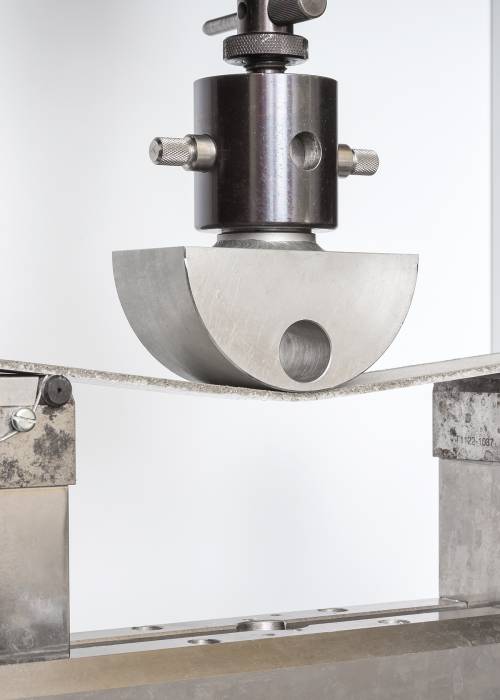
The deformability of tile adhesives is tested to EN 12004-2 at WACKER’s applications laboratory.
A further challenge facing tilers is the adhesive’s open time. This is the length of time during which the adhesive can be worked before it starts setting. Stated in minutes, the open time indicates how much time can elapse between setting a tile in the adhesive bed and attaining a tensile adhesive strength of ≥ 0.5 MPa. The EN 12004 standard on tile adhesives specifies a minimum open time of 30 minutes. Anything longer than that is welcomed by tilers for they can then cover a larger area with adhesive and set the various tiles in place without the compound already starting to harden.
“VINNAPAS® 8812 T in combination with other additives, such as methyl cellulose, extends the open time substantially and so makes the job of tiling much easier,” says Hoffmann. This is just as important for large tiles as for small ones. Comparative tests in WACKER’s applications laboratory show that the open time can be extended by up to 50%, the exact figure depending on the recipe involved.
No matter which trends emerge within the tile sector in the future, adhesive manufacturers’ recipes will continue to focus on the binders on account of their many talents. Even now, it is apparent that the demands on tile adhesives will continue to rise: for example, we are now seeing the emergence of extra-large formats, i.e. tiles with an edge length of 1.20 meters and more, on the market. “The sector is also addressing sustainability,” says Halbach. “As a raw-materials producer, we are among those working on optimizing our production processes in this regard and on avoiding emissions and boosting production efficiency, for example.”
In order that dry-mix mortar manufacturers can continue to provide tilers with optimum recipes for the full range of tiles available, WACKER offers the services of its specialists, who have the necessary expertise and a wide range of dispersible polymer powders that are being improved all the time. After all, it is not just the tile which depends on the adhesive, but also the functionality, aesthetics and longevity of the bathroom – and thus consumer satisfaction.
“Greater craftsmanship needed”
Master tiler Markus Ramrath talks about the challenges of laying large-format tiles.
What are the challenges involved in laying large-format tiles?
Markus Ramrath: Large formats have edge lengths of 60 to 120 centimeters. Whoever opts for them must reckon on long installation times. This starts with the preparation time, because the substrates need to be very level when large tiles are used. Otherwise, stresses will more easily build up later that can lead to cracks and breaks in the tile. For aesthetic reasons, the joints between the tiles are usually narrow and allow little margin for error or adjustment afterwards. The tiler therefore has to work extremely accurately. The drying times are also longer because the water released from the adhesive during setting has a harder job finding its way out. There are only a few joints, after all, and they are usually narrow. It is important to employ specialty tile adhesives with crystalline water-binding capacity and an increased proportion of polymer to facilitate better curing. Otherwise, there is a greater risk of stresses and breaks were, e.g., objects to fall onto the tiles. Also, tilers need more time to prepare the tiles properly for the room, i.e. to cut them to size and to create holes for fittings and connections.

Markus Ramrath, master tiler and stonemason from Korschenbroich in North-Rhine Westphalia, is an acknowledged expert in his field and a member of the German Tiles and Natural Stone Technical Association (FFN).
Which rooms lend themselves to such large tiles?
M.R.: They are very good for walls, as there is much less stress on the tiles there. That makes the work of the tiler easier. For flooring in a domestic setting, the large formats are also suitable because the load is manageable. Fitting out car dealerships or large canteens with them would be a different case entirely. Those call for particular experience and skill on the part of the tiler. This also applies to any damage and repairs, because the size of the tiles and the narrow joints make them very difficult to remove and replace. Added to which, the tiles are becoming not only larger, but also thinner.
How do you see this trend?
M.R.: As far as the extra-large formats are concerned, i.e. tiles with edge lengths greater than 1.20 meters, myself and other FFN experts are still very much in the process of learning all about them. Ultimately, what we find out is purely the result of the damage that occurs in practice. We use this to produce specialized information leaflets in which we address the risks and provide advice on how to use extra-large tiles. This work will go on for several more years, though. The extra-large tiles, for example, need up to four people to press them down and a support frame to ensure the ceramic doesn’t break during transport. Finally, we tilers are attempting to adapt our working techniques accordingly. What always has to be borne in mind is that the rooms where the work is done are not constructed to laboratory standards. We have to get the best-possible results from the situation at hand. The tile adhesive manufacturers, too, are adapting their recipes to whatever the tile producers bring to market. There are always new challenges from which we experts learn a lot.
Have you any interesting examples?
M.R.: We had one case where the tiles could not be laid with any of the usual adhesives. Nothing would stick to the reverse side of the ceramic – not even epoxy resin. In another case, a restaurant floor was covered in tiles three millimeters thick. It only took one knife to fall on it and cracks appeared everywhere. However, such damage scenarios help us in the FFN to collate the optimum basic conditions for the laying of large-format tiles – so that such mistakes are not repeated in the future.
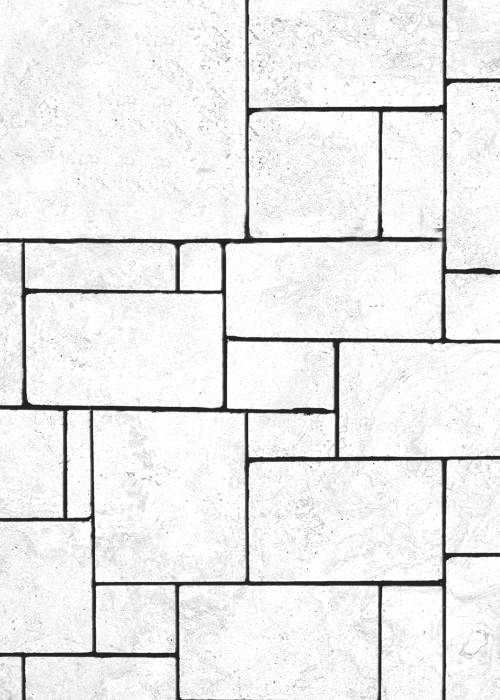
VINNAPAS® classes
To simplify your choice, we have summarized our VINNAPAS® grades into six product classes
L
VINNAPAS® L class – optimized leveling characteristics
Ensures smooth surfaces with outstanding leveling properties, such as for self-leveling flooring compounds
T
VINNAPAS® T class – highly thixotropic
Ensures excellent thixotropic properties, as required in thixotropic tile adhesives and smoothing and/or leveling compounds
E
VINNAPAS® E class – improved properties
Enhances the properties in many applications, resulting in greater ease of processing, adhesion and water resistance
N
VINNAPAS® N class – neutral effect on rheology
Ensures a high level of formulation flexibility and a diverse range of applications
H
VINNAPAS® H class – hydrophobic excellence
Ensures notable hydrophobic properties in all kinds of plasters, grout mortars and external thermal insulation composite systems (ETICS/EIFS)
F
VINNAPAS® F class – superior flow properties
Ensures outstanding flow properties without the addition of synthetic superplasticizers or casein; suitable for self-leveling flooring compounds that require immediate liquefaction and a specific rheology
Contact
For more information on this topic, please contact:
Mr. Armin Hoffmann
Senior Technical Service Manager
Construction Polymers
+49 8677 83-4820
armin.hoffmann@wacker.com
